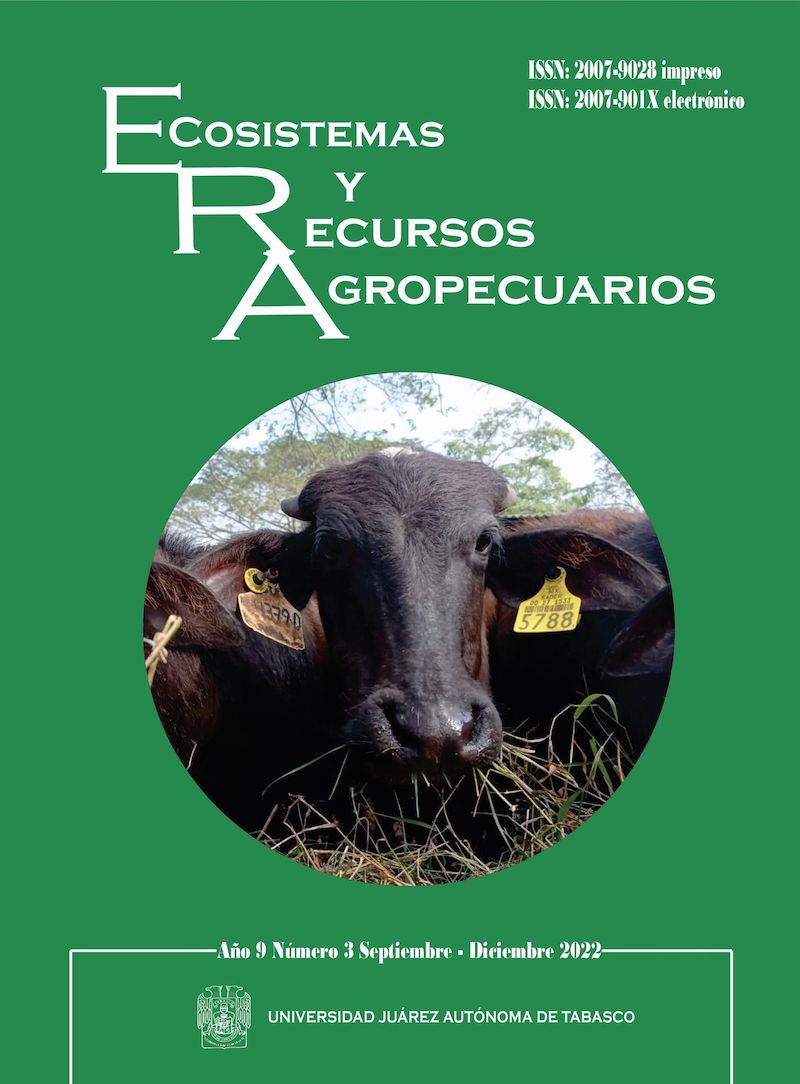Potential areas for establishing silvopastoral systems with Pinus lawsonii and two forages in Michoacán, Mexico
DOI:
https://doi.org/10.19136/era.a9n3.3282Keywords:
climatic envelope, erosion, geographic information systems, livestock, soil conservationAbstract
Silvopastoral systems represent an alternative to the production
of forage for cattle grazing and firewood, the reduction of soil degradation, and the diversification of agriculture production. This study aimed to identify the potential areas for establishing silvopastoral systems consisting of Pinus lawsonii and two forage gramineous Eragrostis curvula and Chloris gayana, in the state of Michoacán, Mexico, including areas with degraded soils. First, the potential species distribution of the three species was modeled according to their elevation, mean annual precipitation, mean annual temperature, and soil type requirements. Then the polygons of each species were intersected to obtain the potential areas. Finally, such areas were overlapped with the shape of degraded soils. As a result, the
potential areas for silvopastoral systems with P. lawsonii and E. curvula were found in the Michoacan portion of the Neo-volcanic Axis on a surface of 190 918 ha in 61 municipalities. The suitable areas with P. lawsonii and C. gayana were found in the
Neo-volcanic Axis and the Sierra Madre del Sur on a surface of 329 546 ha within 81 municipalities. Furthermore, 60.8% of the suitable area of P. lawsonii with E.
curvula and 55.4% of P. lawsonii with C. gayana were found on degraded soils. The results show high potential for establishing silvopastoral systems with these species in Michoacán, which can recover degraded soils and provide forage for cattle and firewood for rural inhabitants.
Downloads
Downloads
Published
Issue
Section
License
Copyright (c) 2022 Ecosistemas y Recursos Agropecuarios

This work is licensed under a Creative Commons Attribution-NonCommercial-ShareAlike 4.0 International License.
Aviso de copyright
Los autores que se envían a esta revista aceptan los siguientes términos:
una. Los autores conservan los derechos de autor y garantizan a la revista el derecho a ser la primera publicación del trabajo con una licencia de atribución de Creative Commons que permite a otros compartir el trabajo con un reconocimiento de la autoría del trabajo y la publicación inicial en esta revista.
B. Los autores pueden establecer acuerdos complementarios separados para la distribución no exclusiva de la versión del trabajo publicado en la revista (por ejemplo, en un repositorio institucional o publicarlo en un libro), con un reconocimiento de su publicación inicial en esta revista.
C. Se permite y se anima a los autores a difundir su trabajo electrónicamente (por ejemplo, en repositorios institucionales o en su propio sitio web) antes y durante el proceso de envío, ya que puede conducir a intercambios productivos, así como a una cita más temprana y más extensa del trabajo publicado. (Consulte El efecto del acceso abierto).

